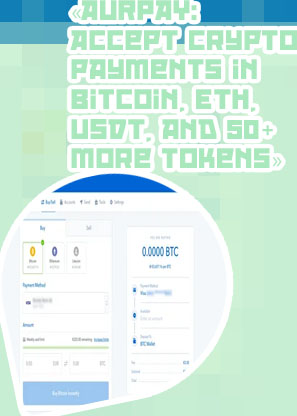

As Ethereum continues to make waves in the world of cryptocurrency and blockchain technology, staying informed about the latest news and developments is crucial for investors and enthusiasts alike. To help you stay up-to-date with the latest in Ethereum news, we have compiled a list of 3 articles that cover various aspects of this popular cryptocurrency. From updates on the Ethereum network to new projects and partnerships, these articles will provide valuable insights into the world of Ethereum.
Stay up to date with the latest news and developments in the world of Ethereum with these informative articles. From updates on technology advancements to market trends and regulatory news, these articles cover a range of topics to help you stay informed about the popular cryptocurrency platform.
Blockchain technology has been revolutionizing various industries by providing a secure and transparent way to record transactions. One of the most anticipated developments in the blockchain space is Ethereum 2.0, which aims to address the scalability and security issues faced by the current Ethereum network.
Ethereum 2.0, also known as Eth2 or Serenity, is a major upgrade to the Ethereum blockchain that will transition it from a proof-of-work (PoW) to a proof-of-stake (PoS) consensus mechanism. This transition will not only make the network more energy-efficient but also increase its transaction throughput significantly.
One of the key features of Ethereum 2.0 is the introduction of shard chains, which will allow the network to process multiple transactions in parallel, further improving scalability. Additionally, the upgrade will enhance the security of the network by introducing a mechanism called Casper, which will penalize malicious actors and reward honest validators.
Overall, Ethereum 2.0 has the potential to revolutionize the blockchain space by addressing the scalability and security issues faced by the current Ethereum network. This upgrade is essential for the future of blockchain technology as it will enable the network to handle a higher volume of transactions securely, making it more suitable for mass adoption.
Ethereum, one of the leading cryptocurrencies in the market, has been generating significant interest among investors due to its potential for growth and innovation. As the second-largest cryptocurrency by market capitalization, Ethereum has shown considerable resilience and adaptability in the volatile world of digital assets.
One key trend that investors should pay attention to is the ongoing development of Ethereum 2.0, which aims to improve the scalability, security, and sustainability of the Ethereum network. This upgrade is expected to address some of the current challenges facing the Ethereum blockchain, such as high gas fees and slow transaction speeds. With these improvements, Ethereum could attract more users and developers, leading to increased adoption and value appreciation.
In terms of predictions, many analysts believe that Ethereum has the potential to reach new all-time highs in the coming months. Factors such as the growing interest in decentralized finance (DeFi) applications, the rise of non-fungible tokens (NFTs), and institutional adoption of Ethereum could contribute to its upward trajectory.
One practical use case of Ethereum can be seen in the realm of decentralized finance, where users can access a wide range of financial services without the need for traditional intermediaries. By utilizing smart contracts on the Ethereum blockchain, individuals can lend, borrow, trade, and invest in a
The cryptocurrency market, particularly Ethereum, is currently facing a myriad of regulatory challenges around the world. Governments and regulatory bodies are struggling to keep up with the fast-paced and constantly evolving nature of cryptocurrencies, leading to uncertainty and potential roadblocks for investors and businesses alike.
One of the key challenges facing Ethereum and the broader cryptocurrency market is the lack of uniform regulations across different countries and regions. This inconsistency in regulatory frameworks can create confusion and hinder the growth of the market.
Another major challenge is the issue of compliance with existing financial regulations. Many cryptocurrencies, including Ethereum, operate in a grey area when it comes to traditional financial laws and regulations, making it difficult for businesses to navigate the legal landscape.
Additionally, the anonymity and decentralization of cryptocurrencies present unique challenges for regulators. The lack of a central authority makes it difficult to enforce regulations and prevent illicit activities such as money laundering and fraud.
In order to address these challenges, regulators must work together to create a cohesive and comprehensive regulatory framework for cryptocurrencies. This will help to provide clarity for investors and businesses, while also ensuring the integrity and stability of the market.
Overall, while regulatory challenges remain a significant hurdle for Ethereum and the cryptocurrency market, collaboration between regulators and industry stakeholders is crucial in order to foster innovation and growth in this rapidly expanding sector.
Decentralized Finance (DeFi) has emerged as a groundbreaking innovation within the financial industry, particularly on the Ethereum blockchain. By leveraging smart contracts, DeFi protocols enable individuals to access a wide range of financial services without the need for traditional intermediaries such as banks. This paradigm shift has democratized finance, allowing users to borrow, lend, trade, and earn interest with greater autonomy and transparency.
One practical use case of DeFi is decentralized lending platforms like Compound, where users can lend their crypto assets to earn interest or borrow funds by providing collateral. This decentralized approach eliminates the need for a central authority to approve loans, making the process more efficient and cost-effective. Users benefit from competitive interest rates and the ability to access funds quickly without undergoing a lengthy approval process.
In a positive outcome, a user who borrowed funds on a DeFi lending platform was able to successfully grow their investment by participating in yield farming strategies. By leveraging different DeFi protocols to maximize their returns, the user was able to profitably reinvest their earnings and ultimately increase their overall wealth. This example highlights the transformative potential of DeFi in empowering individuals to take control of their financial future.
